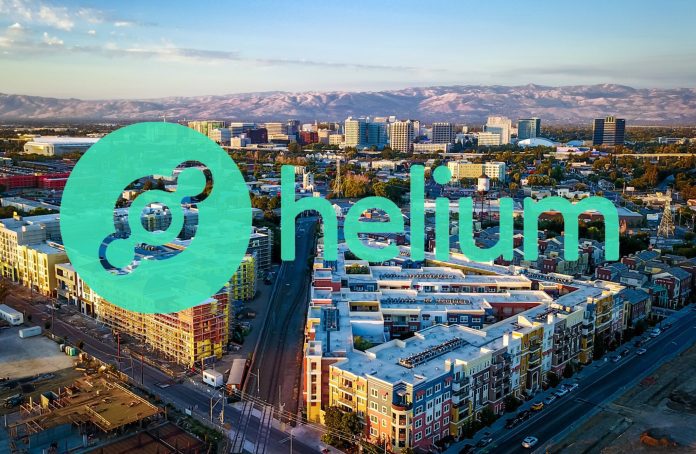The city of San José in Silicon Valley, in California, has struck an arrangement with blockchain-based LoRaWAN provider Helium to extend broadband access to local residents and enterprises in exchange for hosting and expanding new peer-to-peer IoT network infrastructure.
Under the terms of the deal, the city will deploy Helium-compatible LoRaWAN hotspots to residents and small businesses across San José during a six-month pilot period. The hotspots, purchased by the California Emerging Technology Fund (which requires AT&T and Verizon to contribute $60 million over five years) will expand hotspot-maker Helium’s open wireless (‘people’s) network in the city.
Helium claims to connect 205,000 LoRaWAN hotspots in over 18,000 cities in 131 countries across the world; the majority are in the US, joined together in a DIY peer-to-peer mesh network across parts of the country. It also claims to have 500,000 hotspots on back-order, and 50 hotspot manufacturers in certification.
Its business model pays hosts in native blockchain cryptocurrency for IoT traffic across their hotspots; a Helium Network Token (HNT) stamp is issued using a gateway-embedded miner that grants network users LoRaWAN coverage for hundreds of miles, and earns network hosts an income, which can be traded for dollars.
Once connected, the hotspots mine HNT using the energy equivalent of an LED light bulb and transmitting less than two megabytes per month in data, explained Helium. The arrangement in San José will see HNT rewards converted to provide broadband internet access to low-income households.
The city will work with community-based organizations to identify volunteer families, educate them on the pilot initiative, and onboard them to qualify for and receive benefits. The city will use its San José Digital Inclusion Partnership, a $24 million cross-sector fund to connect 50,000 households, to help finance the project. Around 95,000 citizens in San José are without internet access.
The city’s new LoRaWAN network will be used to support its ‘smart city vision’ to improve delivery of civic services, such as air quality monitoring, fire detection, and various “climate-related opportunities”. The city said it is providing “blueprint” for other cities. A statement said: “San José is trailblazing a path forward to becoming a smart city built on blockchain by deploying new applications on top of The People’s Network.”
Sam Liccardo, mayor for the city of San José, said: “Here in the heart of Silicon Valley, the city of San José must set an example for how to solve problems with emerging technologies and public-private partnerships. Emerging technologies [must] improve how we serve our community. This first-of-its-kind partnership between the mayor’s office, Helium, and CETF represents one of many innovative public-private partnership models that we’re advancing to bridge the digital divide for residents.”
Jordan Sun, chief innovation officer for the city, said: “As City Hall’s venture studio, my team is leading the way in identifying and leveraging emerging technologies and business models to address some of the most pressing challenges in our community. We need to continue pushing the boundaries and stretching our imagination of what is possible if we want to solve systemic injustices in our community.”
Easrlier this month, LoRaWAN operator Senet agreed a US-based roaming deal with Helium. The new arrangement means Senet’s IoT customers can make use of the Helium network, and Helium’s hotspot operators stand to gain more network traffic. The deal follows Senet’s announcement it is offering integration services with third-party LoRaWAN networks, alongside wholesale LoRaWAN plans for US cellular operators.

